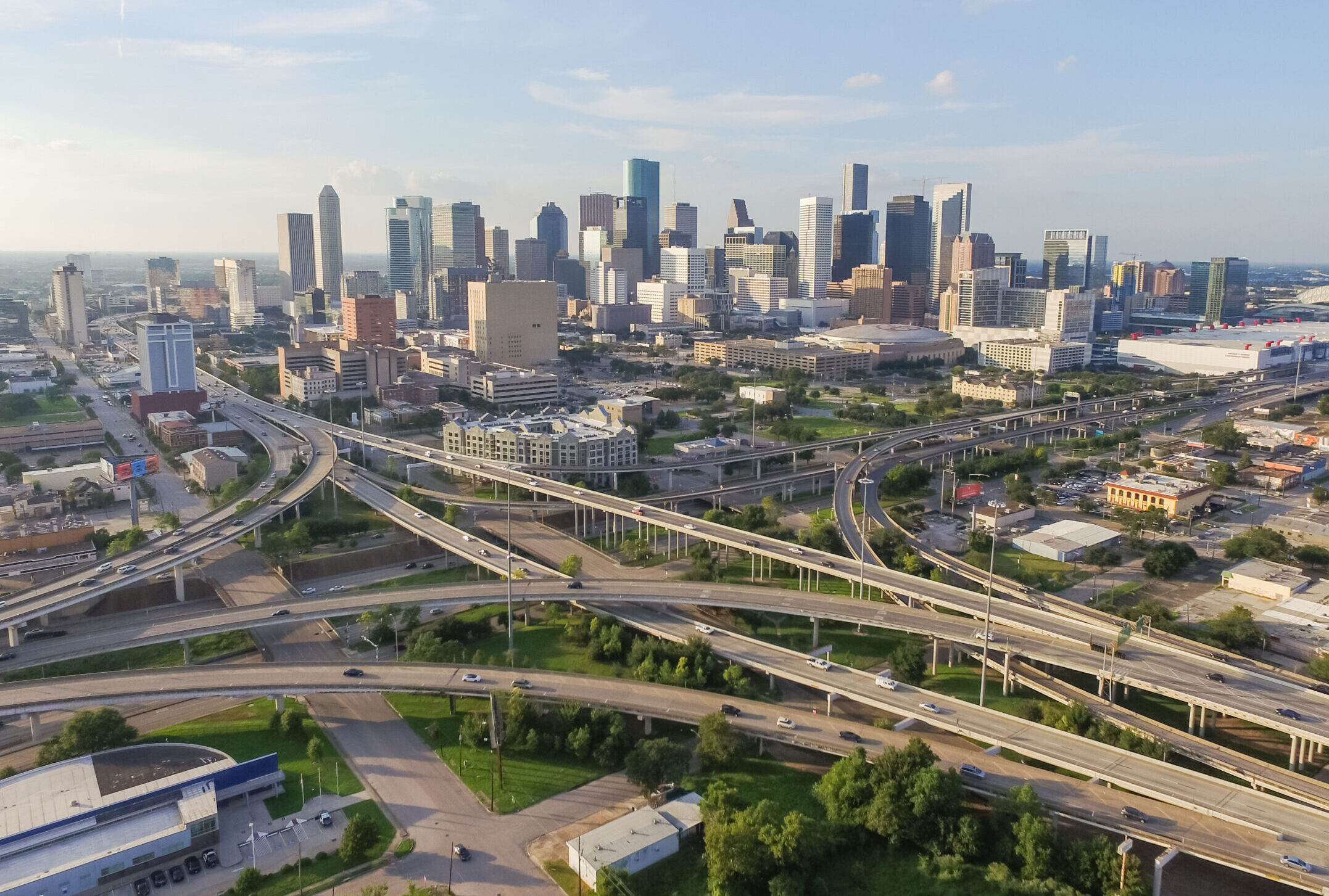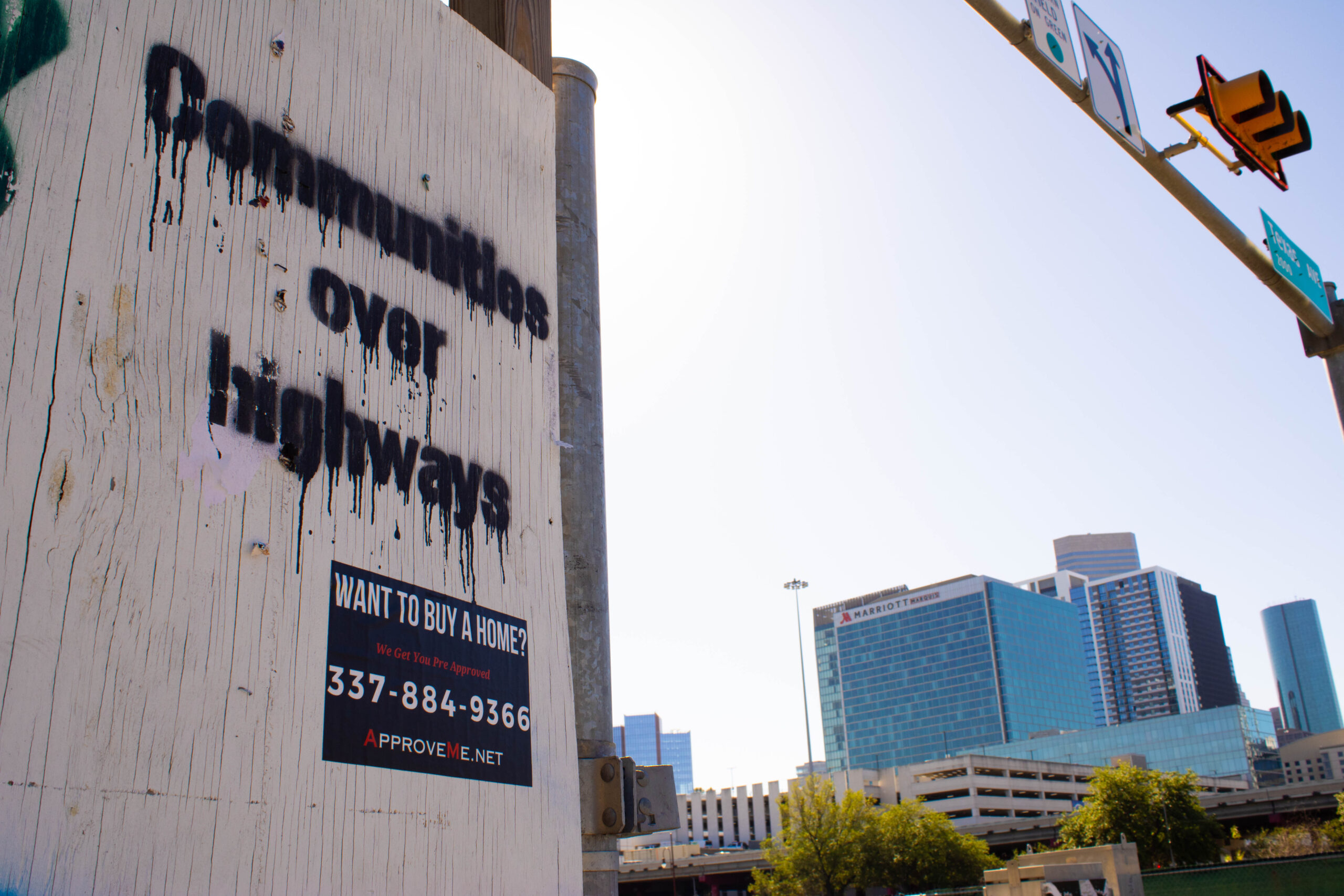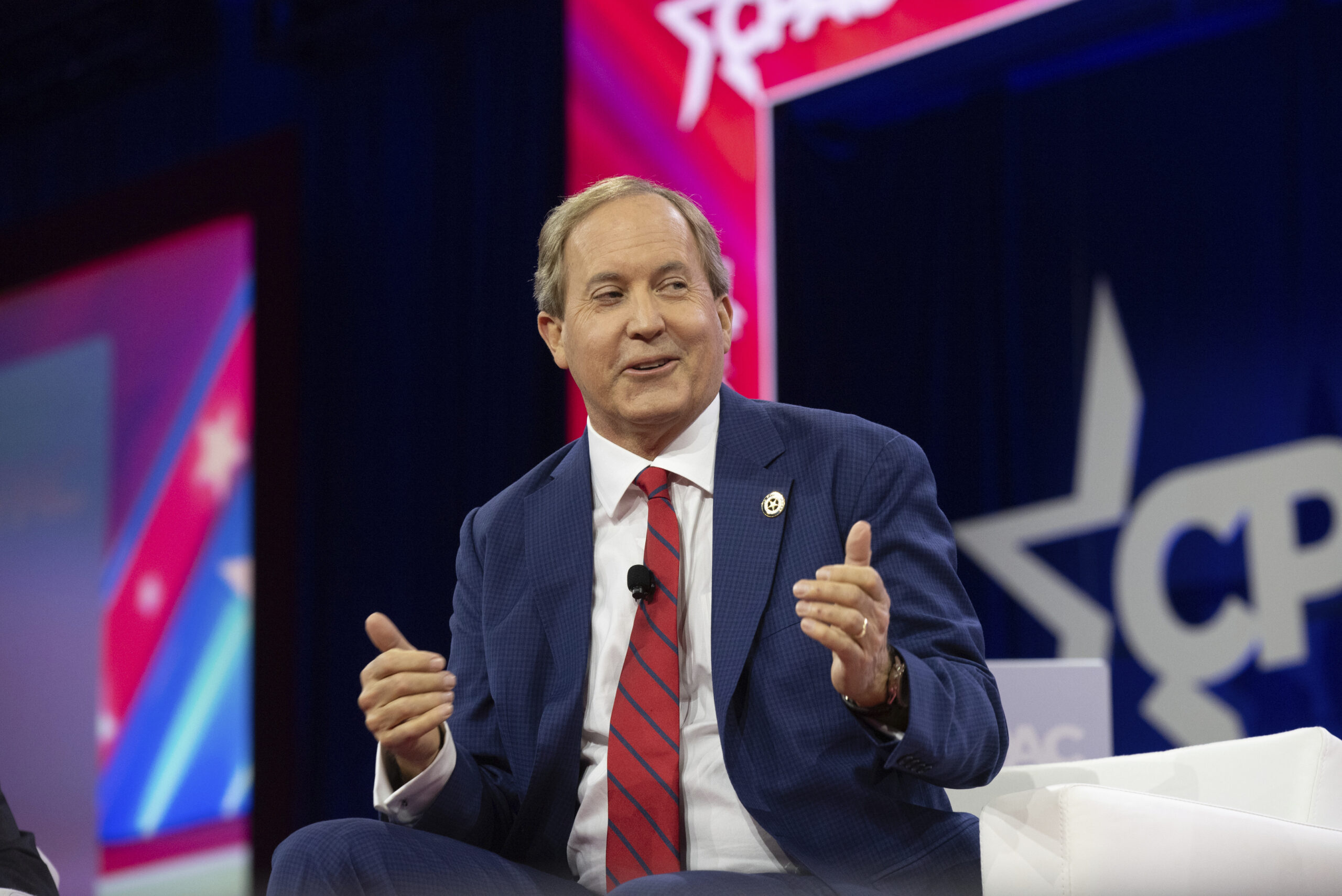
‘TxDOT’s Still Bulldozing Over Our Communities’
Community members say the state transportation agency is violating its agreement with the feds to reduce the discriminatory impact of its plans to expand I-45.

Fifth Ward resident Kendra London, 43, helped form the neighborhood organization Our Afrikan Family to serve and educate her community about a major threat: an expansion of Interstate 45 that will wipe out hundreds of Houston homes and businesses and has already forced evictions. For the past five years, she and other advocates have been door-knocking and holding meetings to educate residents about TxDOT’s plans. A little over a year ago, she thought they had made progress when the Federal Highway Administration signed a Voluntary Resolution Agreement with TxDOT ending a two-year civil rights investigation into the discriminatory environmental and economic impact the North Houston Highway Improvement Plan would have on several Black and brown neighborhoods.
The agreement allowed the project, a $9.7 billion plan to widen Interstate 45 and overhaul the downtown freeway system, to proceed. TxDOT expects construction to continue until 2042. In return, TxDOT agreed to mitigate the impacts on communities of color by considering ways to reduce the project’s footprint, monitoring air quality, providing more transparency, and helping residents, businesses, and organizations relocate within the community.
But TxDOT appears to be breaking its promises, according to documents and interviews with London and other community organizations.

TxDOT continues to demolish more public housing units than it was approved to displace, records show. Experts say its promise for pollution monitoring, which so far has included a report from a single monitor, is inadequate. And even TxDOT’s own reports show that promises to help businesses have fallen short. By September, TxDOT had to complete a survey of an estimated 300 affected non-residential businesses and organizations and document progress in providing relocation services. But TxDOT surveyed only 21 so-called “non-residential units” and claimed none needed relocation services.
Many residents told the Texas Observer they don’t know what will happen to them even though construction will begin as soon as August 1. TxDOT will “just pick people up and just move them out, while people are still in the dark and don’t know what’s happening,” London said. “TxDOT’s still bulldozing over our communities.”
TxDOT restated provisions from the agreement in response to an email the Observer sent outlining complaints from the community.
A civil rights complaint filed in December 2021 by five advocacy organizations calculated that 160 single-family homes, 433 multi-family units, 486 public housing and low-income units, 344 businesses, five places of worship, and at least 2 schools would be displaced. The resolution agreement fell short of community demands to reduce the numbers of those displaced, though it requires TxDOT to provide relocation services for affected businesses and residents to ensure they are “not cut out from the community” and to publicly post information to facilitate relocation.
“It’s obvious decisions have already been made. They never follow up on our questions.”
Julia Orduña, regional director at the low-income housing advocacy organization Texas Housers, like London, expressed concern that more public housing residents are being displaced than necessary and many have received inadequate assistance.
While all right-of-way acquisitions and demolition for the project were supposed to cease during the federal government’s two-year investigation, the Houston Housing Authority proceeded to evict all residents still living in 184 units of the public housing complex Clayton Homes, which was then demolished. London said the agency hired only a few “navigators” to advise residents on “enhanced relocation services” and many residents never received help.
TxDOT originally stated it plans to acquire only two of the six buildings of the public housing complex Kelly Village, but in its September progress report and December public presentations the agency revealed a new map showing the footprint encompasses all six buildings housing 270 units. When questioned about this, TxDOT public information officer Danny Perez wrote: “TxDOT is working with the Houston Housing Authority to acquire 50 of the 270 Kelly Village public housing units.” Furthermore, it’s unclear whether the hundreds of displaced public housing residents will be able to relocate to affordable units within the community. TxDOT has promised displaced public housing residents first rights to affordable housing in two new mixed-income residential units planned within two miles of Clayton Homes. But residents have not been told how many affordable units will be available, what income level will be used by developers to determine eligibility, and how long these units will remain affordable,” Orduña said.
“There is no real accountability with private entities managing these low-income units. So is there actual security for households to even be able to move there, and then when they do, [to] not fear displacement again?” Orduña said.
The resolution agreement also required TxDOT to inform property owners of an “occupancy agreement” option to remain at the property until the start of construction. But, as of September last year, TxDOT reported they had entered into only nine occupancy agreements and only three were active.
Community organizers, like Stop TxDOT I-45 organizer Alexandra Smither, also question the amount of outreach TxDOT has done with property owners and say that private right-of-way acquisition companies have long been pressuring homeowners to sell below market value before the project even received final approval.
Low-income renters, living in the 400-some multi-family units in the project’s footprint, are even more out of luck than homeowners, businesses, or public housing residents because they are at the whims of their landlord’s decision to sell their property. However, under the resolution agreement, renters were deemed eligible for the $30 million set aside for affordable housing initiatives and relocation compensation. Within three months of signing its agreement with the feds, TxDOT was required to gather public input and publicize a plan for how they would use this pot of money.
According to the resolution agreement, TxDOT agreed to hold public meetings twice a year in “an open forum for the community to provide feedback, raise issues, and ask questions about TxDOT’s compliance with the agreement.” Meetings were required to be accessible to residents who are disabled and who have limited English proficiency.
But attendees at the first public meeting TxDOT held last December reported that agency representatives didn’t leave enough time for community feedback, foreign language translation to English didn’t last the entire meeting, and the room was too small and crowded to accommodate disabled residents. Many residents got frustrated and left.
“TxDOT is not listening. It’s obvious decisions have already been made. They never follow up on our questions,” London said.
In a city ranked the sixth-worst for fine particle air pollution, civil rights complainants had noted that TxDOT’s overhaul of the downtown freeway interchanges would shift more traffic and vehicular air pollution toward the low-income communities of color who already face higher rates of asthma and cancer—in Near Northside, Fifth Ward, and Second Ward, away from the whiter, wealthier communities of Memorial Park, Fourth Ward, and Midtown.
The resolution agreement failed to force TxDOT to mitigate past environmental harms when the agency built Houston’s main highways through redlined Black and brown communities. It only required TxDOT to install one air monitor in each of the three segments of the project totaling 24 miles. In order to establish a baseline reading of pollutant levels, TxDOT must monitor the air for one year before starting construction in that segment. In response, TxDOT deployed one air monitor at the southernmost tip of Segment 3, a 12.3 mile area including the downtown interchanges.
So far, the agency has shared only one report from a month-long reading of the Segment 3 air monitor with the public.
“It’s not enough,” said Anthony D’Souza, research and policy coordinator for Air Alliance Houston. “Any expert can tell you that one monitor [per segment] is not enough to determine pollution levels, especially for a project that expansive.”
D’Souza said that average readings over a day or three days water down the data and are insufficient to understand what pollution levels are like during peak traffic hours.
Yet even that limited data shows that before construction, nitrous oxide levels exceed EPA standards, he said. Other common vehicular pollutants, like ozone, are not being measured at all. After a few hours, these chemicals cause throat irritation, coughing and wheezing and over longer periods can lead to asthma, heart disease, lung disease, cognitive impairment, and cancer.
“You end up underestimating the levels of pollution caused by the traffic on the freeway, and it leads you to believe that the project won’t have a substantial impact on pollution levels,” D’Souza said.
The proposed expansion project will add four more lanes, two each way to I-45 and another four lanes to a segment of I-10. For years, community members have called on the agency to reduce the number of lanes it plans to build.
The resolution agreement calls for TxDOT to “evaluate reasonable opportunities to reduce the project footprint” but doesn’t specify how. To date, community members and organizations have not received any information about how TxDOT plans to reduce the footprint of the plan.
“At the December federally required meetings, TxDOT employees were hesitant to talk about reducing the footprint, and it certainly was not suggested. The federal government needs to ensure it truly happens,” said Smither.
Community members are organizing to call on the feds to step in and enforce the agreement. The Federal Highway Authority has a lot of power. If it finds TxDOT in violation of its agreement, it can ask the state agency to remedy its actions, pursue sanctions, withhold federal highway funds, and ask the Department of Justice to enforce the agreement.
“We are begging the federal government to step in and live up to their big promises of protecting people from further damage wrought by highway expansion. They have the power. They need to use it. What’s happening here is wrong,” Smither said.
In the mid-1960s, as construction of Houston’s Interstate 10 razed swaths of the predominantly Black Fifth Ward community, London’s grandmother came home one day to find another house had been dropped into her backyard.
“There was no communication or community involvement then. And there’s no communication or community involvement now,” London said.



